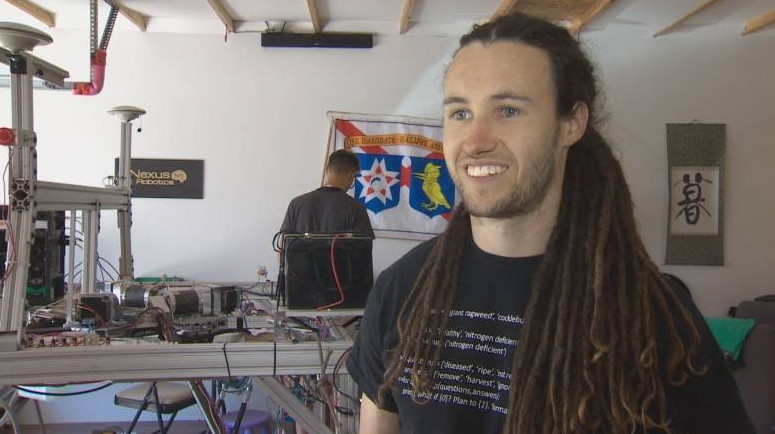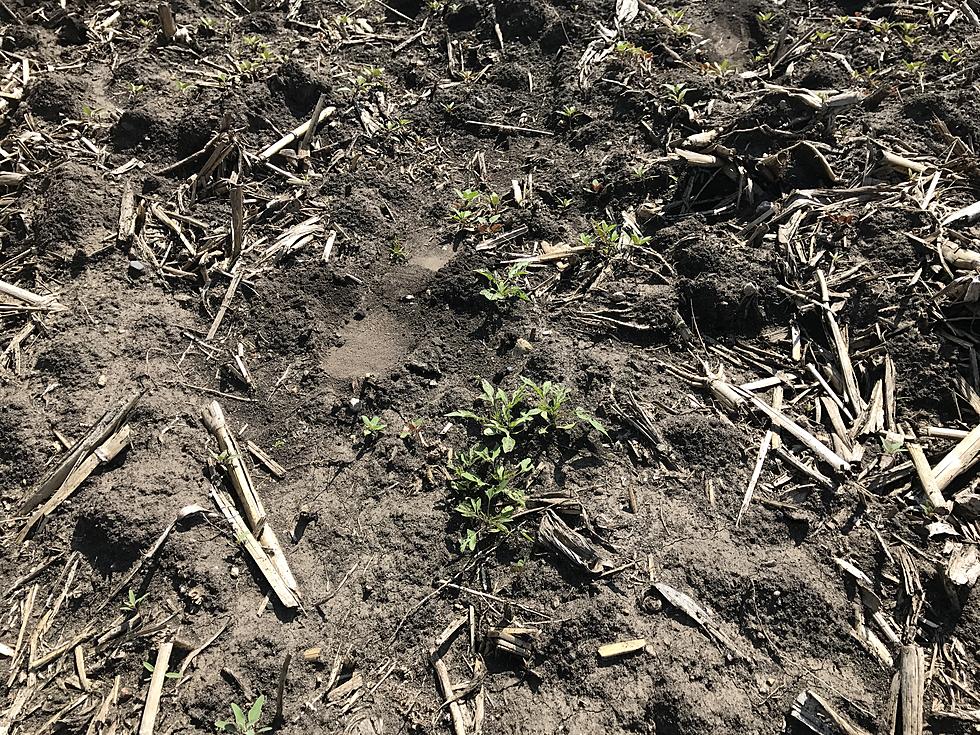Nexus Robotics beat out teams from U.S. universities at the agBOT Challenge in Indiana
A new robot created in Nova Scotia may mean farmers could get some help tackling troublesome weeds in their fields.
This month, Nexus Robotics, a technology startup based in Dartmouth, N.S., won the weed-and-feed competition at the agBOT Challenge, an international showdown between agricultural robots in Rockville, Ind.
Dubbed R2 Weed2 or Hal-Bot, the autonomous machine uses artificial intelligence to distinguish between weeds and crops and is designed to both pluck weeds and spray herbicide.
“We want to get rid of the weed and keep the crop and even fertilize it. So one of the advancements … we made is vision systems can be better than humans at distinguishing them,” said Thomas Trappenberg, part of the small team behind the battery-powered robot.
The robot has a 1.5-metre square frame with a central nozzle for spraying fertilizer or herbicide and a cutting wheel to slice the weeds that have a less developed root system.
“We can treat different types of weeds differently because it’s more advantageous to cut certain weeds versus spray other weeds,” said Teric Greenan, who grows vegetables on a farm in Lunenburg County in addition to his work with Nexus.
Greenan came up with the idea, and hopes it will save time and money for farmers who would otherwise fight weeds with a combination of herbicides and manual labour.
The machine uses a “drastically lower” volume of herbicides than what would be sprayed using a tractor, Greenan said.
“Because the robot is super accurate with where it’s spraying … it actually allows the robot to use a much more effective herbicide because it’s just hitting the weeds. Whereas before, if that was to just be sprayed randomly by a tractor, it would actually kill your crop,” he said.
“I think that our robot, it’s going to have a really big part to play in integrated pest management and making sure that weeds don’t become resistant to herbicides.”
The team created a program to give the robot images of plants and weeds of varying shades of green to help it distinguish between them.
Jad Tawil, who writes the software, said it could operate with up to 99 per cent accuracy if the plants were in a row.
“Basically with machine learning, if you feed a network enough data, it’ll learn the necessary features to distinguish between the classes of items you want it to distinguish between,” he said.
“Every pixel in the camera, in the image, is labelled with a certain probability that it is a certain kind of plant. This is used to steer the delta robot arm to it,” said Trappenberg.
Trappenberg said the startup’s team worked 16-hour days, seven days a week for two months in preparation for the competition, where they faced off against teams from large U.S. universities.
“I have to say, it was worth it,” he said. “This gives us the encouragement to work even harder.”
“Using our expertise, using people who know about it in this province, and showing that Nova Scotia can win a competition in North America, it … gives us the encouragement to work even harder.”
Though the robot is now in Trappenberg’s garage in Hatchet Lake, the work hasn’t stopped.
This summer, the team plans to work with farmers who are interested in trying out the prototype. They plan on designing a second version that they hope to get to farmers by next year, with hopes of eventually selling it.
Credit: cbc.ca













